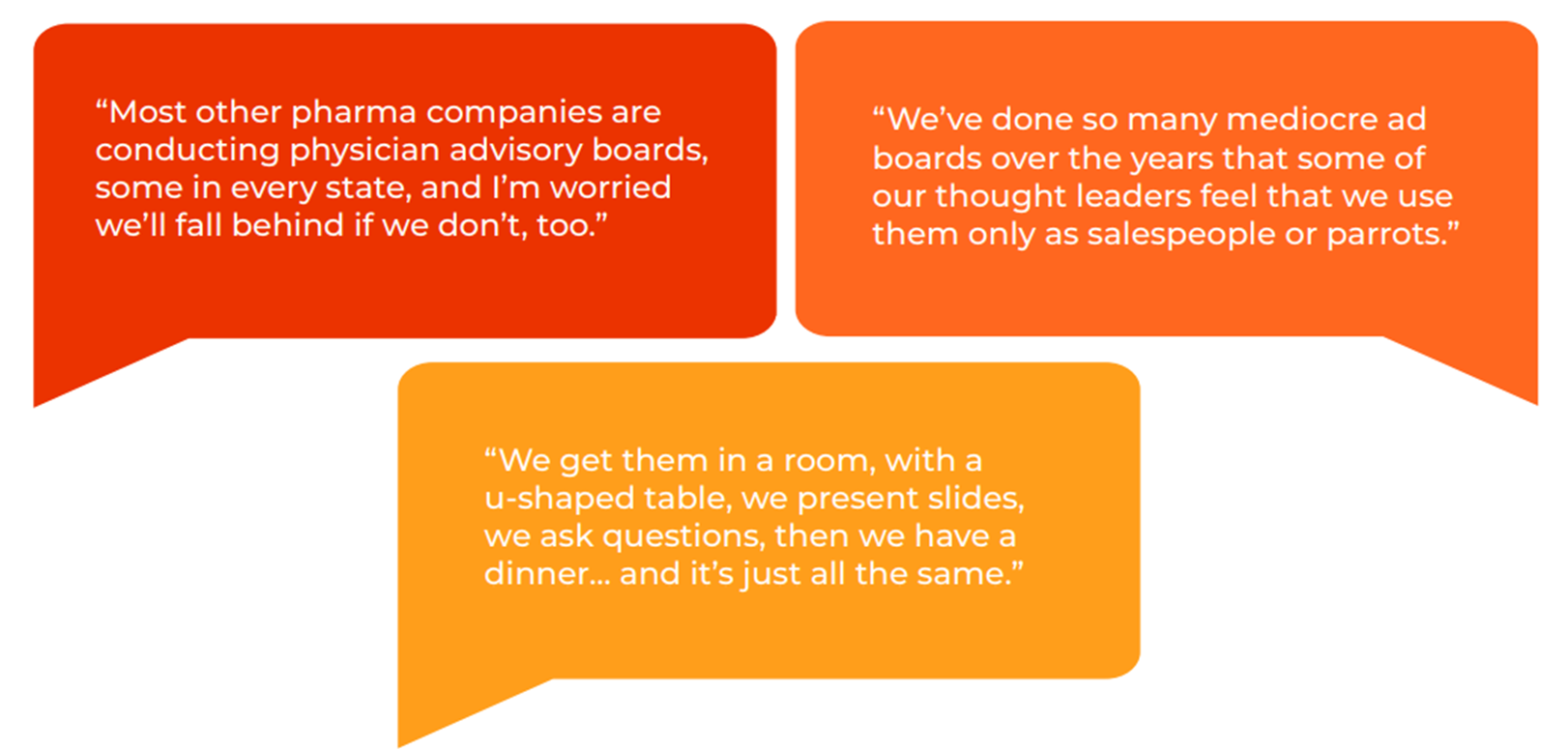These are real quotes we have collected from colleagues and clients across the life sciences industry over the past few years. The idea of engaging customers to better understand their needs and gain their perspective is alluring, yet the physician advisory board often becomes a stiff, uninspired affair. The truth is, healthcare brands do need to engage their best customers and leverage their insights, in order to:
- Understand real world challenges
- Source better ideas
- Gain feedback on in-market solutions
- Continuously identify areas for improvement
But, all too often, life science leaders fall into a trap. The inertia of doing things as they have been done before, the incessant pressures of quarterly budgets, and the stress of annual planning have made ad boards a table stakes tactic. Unfortunately, this standard approach to engaging key customers leaves a lot to be desired. There is little differentiation in the market, and this often leaves advisors uninspired, disengaged, disappointed.
From brand teams’ perspectives, these events often elicit canned responses that are, at worst, simply what advisors think the brand wants to hear. At best, they smack of the same insights these key opinion leaders (KOLs) shared last month in a competing brand’s advisory board.




